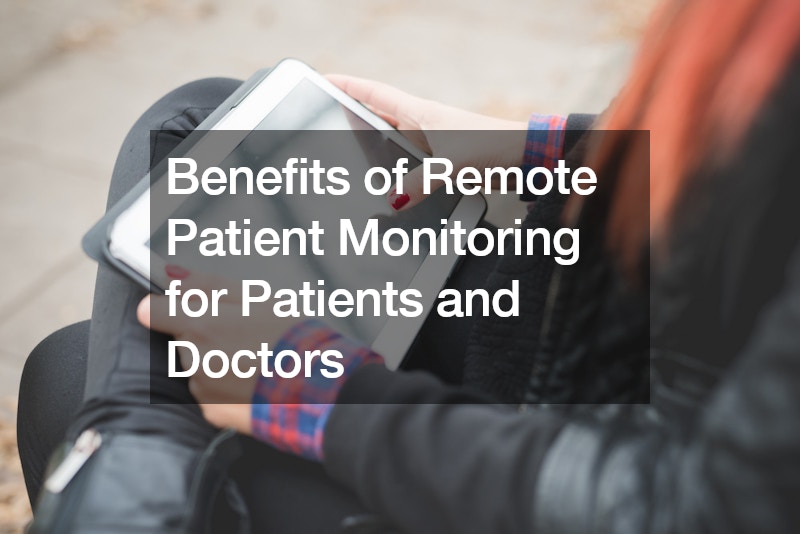
In today’s rapidly evolving healthcare landscape, technology continues to reshape how medical services are delivered and accessed. One significant advancement that has gained traction in recent years is Remote Patient Monitoring (RPM). This innovative approach allows healthcare providers to monitor patients’ health remotely, leveraging technology to collect and transmit vital health data from the comfort of patients’ homes. RPM not only enhances the patient experience but also offers numerous benefits to healthcare providers, improving overall efficiency and quality of care.
Improved Access to Care
One of the primary advantages of Remote Patient Monitoring is its ability to break down barriers to healthcare access. For patients living in remote areas or those with mobility issues, accessing regular medical care can be challenging.
RPM bridges this gap by enabling patients to receive continuous monitoring and medical support without the need for frequent in-person visits. This accessibility ensures that patients can manage their health effectively from home, reducing the inconvenience and cost associated with traveling long distances for medical appointments.
Real-Time Monitoring and Early Detection
Another key benefit of RPM is real-time monitoring of patients’ health metrics. Through connected devices like smartwatches or medical sensors, healthcare providers can track vital signs, chronic conditions, or post-surgery recovery progress remotely. This continuous data collection allows for early detection of any changes or abnormalities in a patient’s health status. By identifying issues promptly, healthcare providers can intervene early, potentially preventing complications or hospitalizations.
Personalized Care Plans
Remote Patient Monitoring facilitates the creation of personalized care plans tailored to each patient’s specific needs. By analyzing the data collected from RPM devices, healthcare providers can gain valuable insights into patients’ health trends and patterns. This information enables them to develop customized treatment strategies that are more effective in managing chronic conditions or post-operative care. Personalized care plans not only improve health outcomes but also enhance patient satisfaction by addressing their individual healthcare needs comprehensively.
Cost Savings and Efficiency
RPM has shown promising results in reducing healthcare costs for both patients and providers. By minimizing the need for hospital admissions or emergency room visits through proactive monitoring, RPM helps lower overall medical expenses. Patients benefit from fewer costly medical interventions, while healthcare providers can optimize resource allocation and streamline care delivery processes. This cost-effective approach improves the financial sustainability of healthcare systems, making quality healthcare more accessible and affordable.
Empowerment and Engagement
Empowering patients to actively participate in their own healthcare is another significant advantage of Remote Patient Monitoring. Patients can access their health data in real time, track progress, and make informed decisions about their health management. This increased engagement motivates patients to adhere to treatment plans, adopt healthier lifestyles, and achieve better health outcomes. Moreover, RPM enhances communication between patients and healthcare providers, fostering a collaborative approach to healthcare delivery.
Integration with Wearable Devices
RPM seamlessly integrates with wearable devices such as smartwatches and fitness trackers. These devices monitor various health metrics, including heart rate, activity levels, and sleep patterns, providing additional valuable data to healthcare providers. The integration of wearable technology enhances the depth and accuracy of remote health monitoring, enabling more comprehensive assessment of patients’ overall well-being.
Enhanced Communication and Support
Effective communication between patients and healthcare providers is crucial for delivering quality care. RPM facilitates timely communication through virtual consultations, messaging platforms, or telehealth services. Patients can easily discuss health concerns, receive medical advice, or make necessary adjustments to their treatment plans without the constraints of traditional office visits. This continuous support and guidance contribute to improved patient satisfaction and better health outcomes.
Peace of Mind and Patient-Centered Care
For patients and their families, Remote Patient Monitoring offers peace of mind knowing that their health is continuously monitored and managed. This proactive approach reduces anxiety about potential health issues and ensures prompt intervention if health conditions worsen. Patient-centered care remains at the forefront of RPM, prioritizing individual needs, preferences, and comfort throughout the healthcare journey.
The Role of Remote Patient Management (RPM)
Remote Patient Management encompasses various aspects of healthcare delivery, focusing on proactive monitoring, early intervention, and personalized care. By utilizing RPM technologies, healthcare providers can optimize patient management strategies, improve clinical outcomes, and enhance the overall quality of care delivery. The integration of RPM into healthcare practices represents a transformative shift towards patient-centric, data-driven healthcare solutions.
In conclusion, Remote Patient Monitoring brings significant benefits to both patients and healthcare providers alike. From improving access to care and real-time monitoring to fostering patient empowerment and reducing healthcare costs, RPM continues to revolutionize the healthcare industry. As technology continues to advance, the potential for RPM to enhance patient outcomes and streamline healthcare delivery remains promising. Embracing Remote Patient Monitoring represents a proactive step towards achieving a more efficient, accessible, and patient-centered healthcare system.
.




